Télé-vision
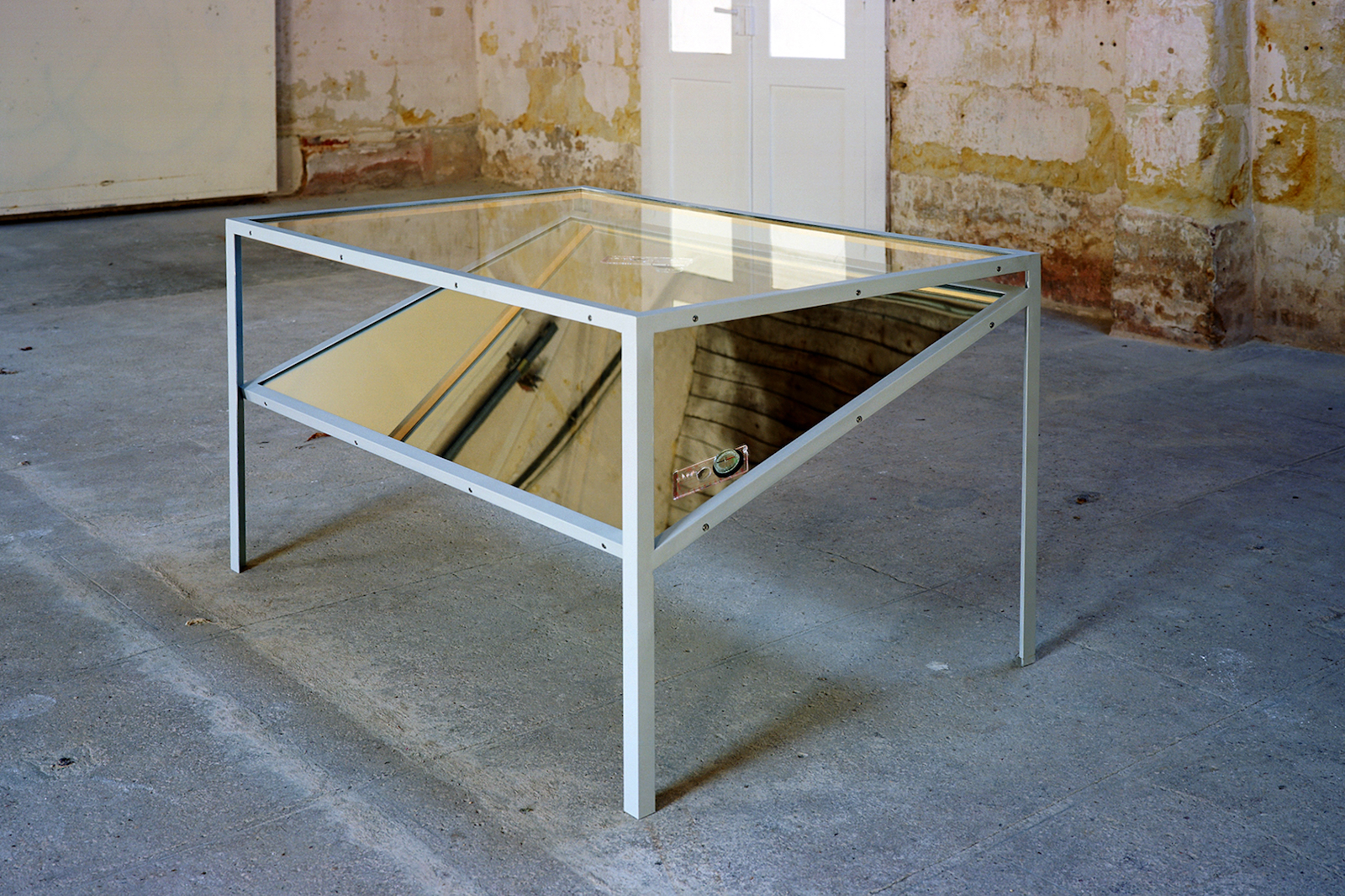
47,6 x 32,2 x 26,3 inch
Compass Experiment Table réplique la table ayant servi à la réalisation d'une série d'expériences menées à l'institut de recherche de Stanford en Californie pendant cinq semaines en 1972 avec Uri Geller. Personnage médiatique et controversé, habitué des plateaux de télévision dans les années 1980-90, et considéré par ses détracteurs comme un simple prestidigitateur, il s'est livré à plusieurs reprises à des expériences de télékinésie filmées ou retransmises à la télévision.
Avec le développement de l'information et la retransmission en direct, la perspective d'un progrès technologique qui permettrait d'abolir le temps et les distances est devenue un principe familier. Les expériences radio ou télé-diffusées de Geller tentaient de dépasser le principe d'une communication unilatérale pour rendre au receveur sa part active d'interlocuteur. Ces expériences de communication au travers des ondes étaient un révélateur de la part manquante d'une réciprocité révolue avec un interlocuteur devenu uniquement spectateur.
Lors de l'expérience dite de la boussole, Geller devait réussir à déplacer l'aiguille magnétisée d'une boussole placée sur une table. Sous celle-ci, un miroir permettait d'isoler chaque angle de vue pour la caméra qui documentait l'expérience. Uri Geller ne devait toucher ni la boussole ni la table. Après plusieurs essais infructueux, il put déplacer l'aiguille de quelques degrés à trois reprises, lentement et avec difficulté. Il suggéra ensuite une autre tentative en demandant aux personnes présentes de former un cercle autour de lui et cette fois le mouvement de l'aiguille augmenta perceptiblement.

Image: 4 x 5 inch
Ed. 3/10
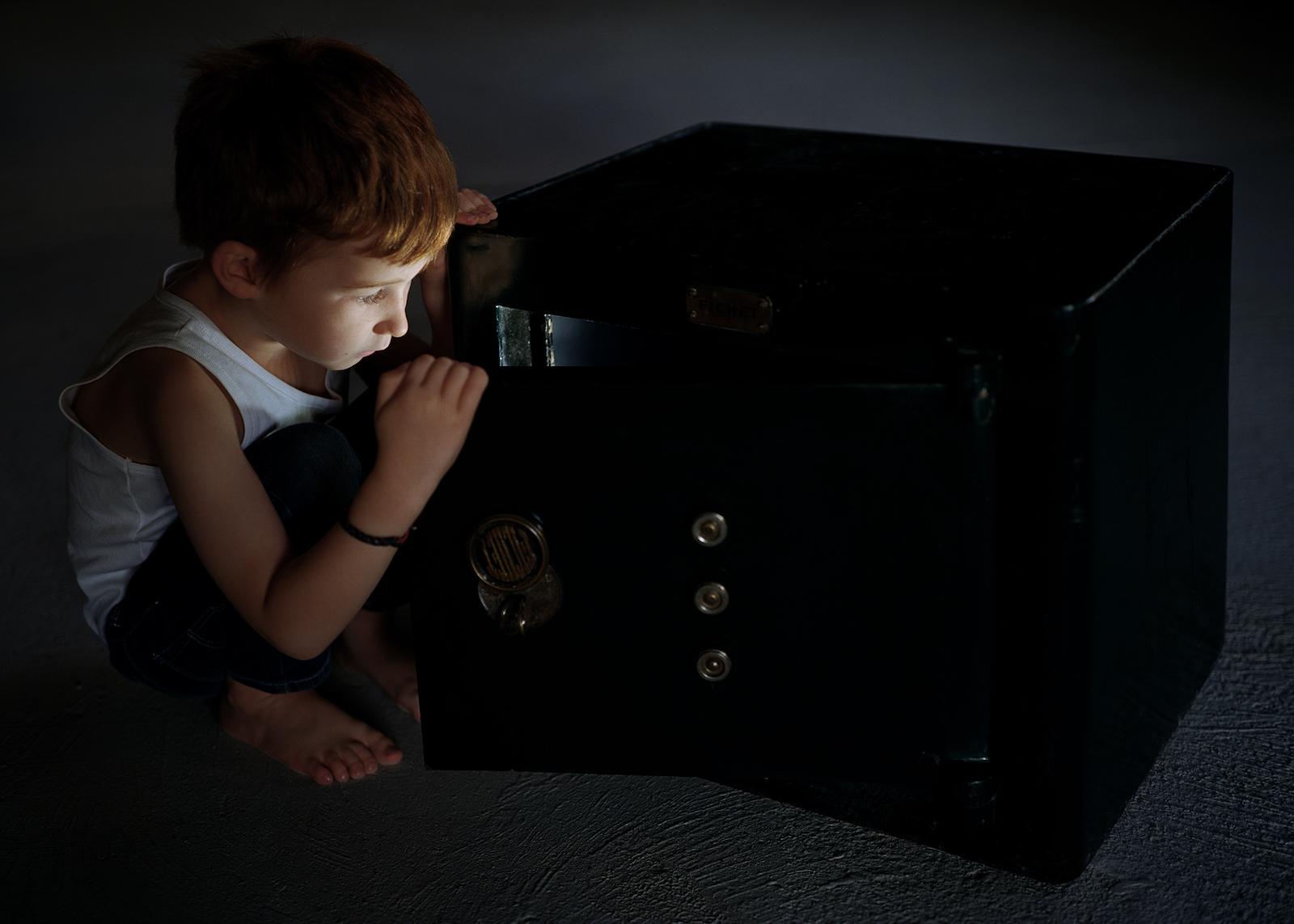
Image: 50 x 70 cm
Le monde forclos is a photograph in which appears the face of a child illuminated by a light coming out of a safe. The chiaroscuro lets us think that the light he discovers in the doorway is that of the day. The title invites us to consider the image as an inversion of the world, the term "forclos" meaning "locked outside".
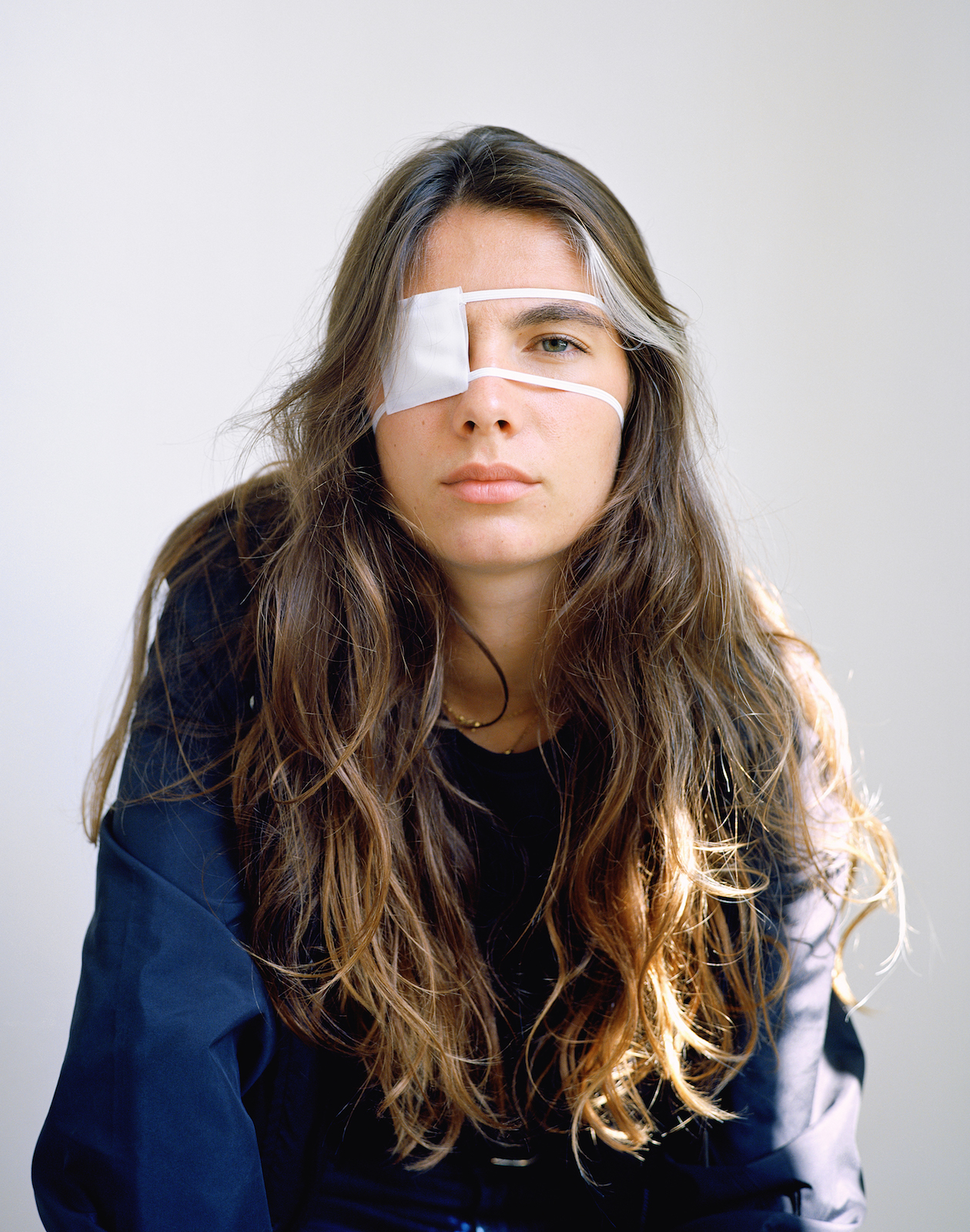
Color photograph
Image: 80 x 63 cm
Frame: 83,5 x 66,5 cm
Human being perceives relief and locates himself in space thanks to the coordination of his two eyes. This simple assertion is at stake in the Télé-vision series, which is conceived as a representation of seeing in the form of a photographic portrait. In the manner of a stereoscopic vision, in which the combination of two images is essential to the apprehension of space and volume. Each photograph embodies the point of view of a single eye, both for the viewer and the model. The entire series thus proposes four similar but unique portraits, presented in pairs, in the image of the gaze that is cast upon them. By placing the viewer in front of the decomposition of the gaze, the series underlines the way in which the omnipresence of images modifies our relationship to the world. The transmission of sense experience through words is slowly replaced by a truncated two-dimensional world constructed by images.
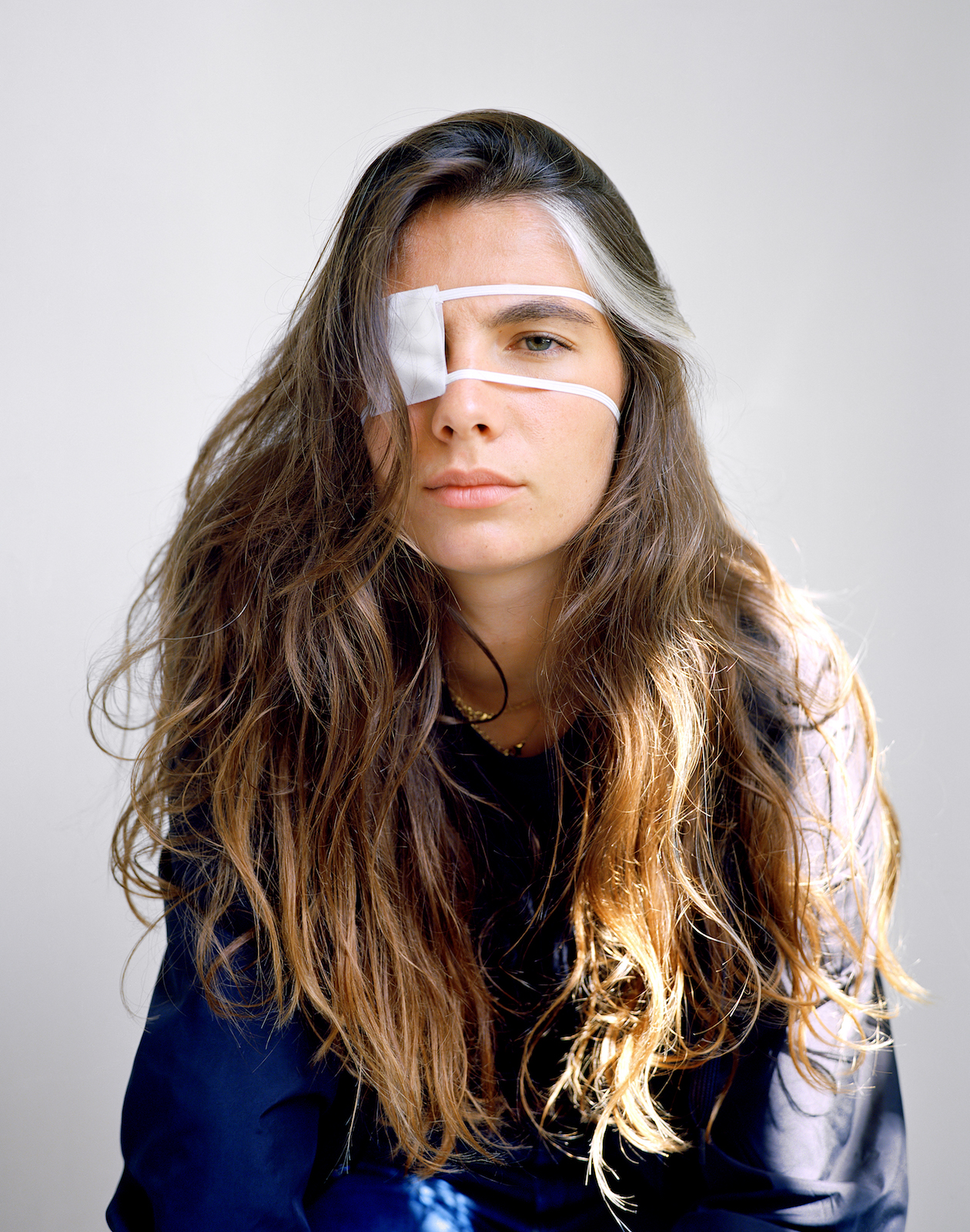
color photograph
Image: 31,5 x 24, 8 inc
Frame: 32,8 x 26 inch
Human being perceives relief and locates himself in space thanks to the coordination of his two eyes. This simple assertion is at stake in the Télé-vision series, which is conceived as a representation of seeing in the form of a photographic portrait. In the manner of a stereoscopic vision, in which the combination of two images is essential to the apprehension of space and volume. Each photograph embodies the point of view of a single eye, both for the viewer and the model. The entire series thus proposes four similar but unique portraits, presented in pairs, in the image of the gaze that is cast upon them. By placing the viewer in front of the decomposition of the gaze, the series underlines the way in which the omnipresence of images modifies our relationship to the world. The transmission of sensitive experience through words is slowly replaced by a truncated two-dimensional world constructed by images.

Color photograph
Image: 80 x 63 cm
Frame: 83,5 x 66,5 cm
Human being perceives relief and locates himself in space thanks to the coordination of his two eyes. This simple assertion is at stake in the Télé-vision series, which is conceived as a representation of seeing in the form of a photographic portrait. In the manner of a stereoscopic vision, in which the combination of two images is essential to the apprehension of space and volume. Each photograph embodies the point of view of a single eye, both for the viewer and the model. The entire series thus proposes four similar but unique portraits, presented in pairs, in the image of the gaze that is cast upon them. By placing the viewer in front of the decomposition of the gaze, the series underlines the way in which the omnipresence of images modifies our relationship to the world. The transmission of sense experience through words is slowly replaced by a truncated two-dimensional world constructed by images.
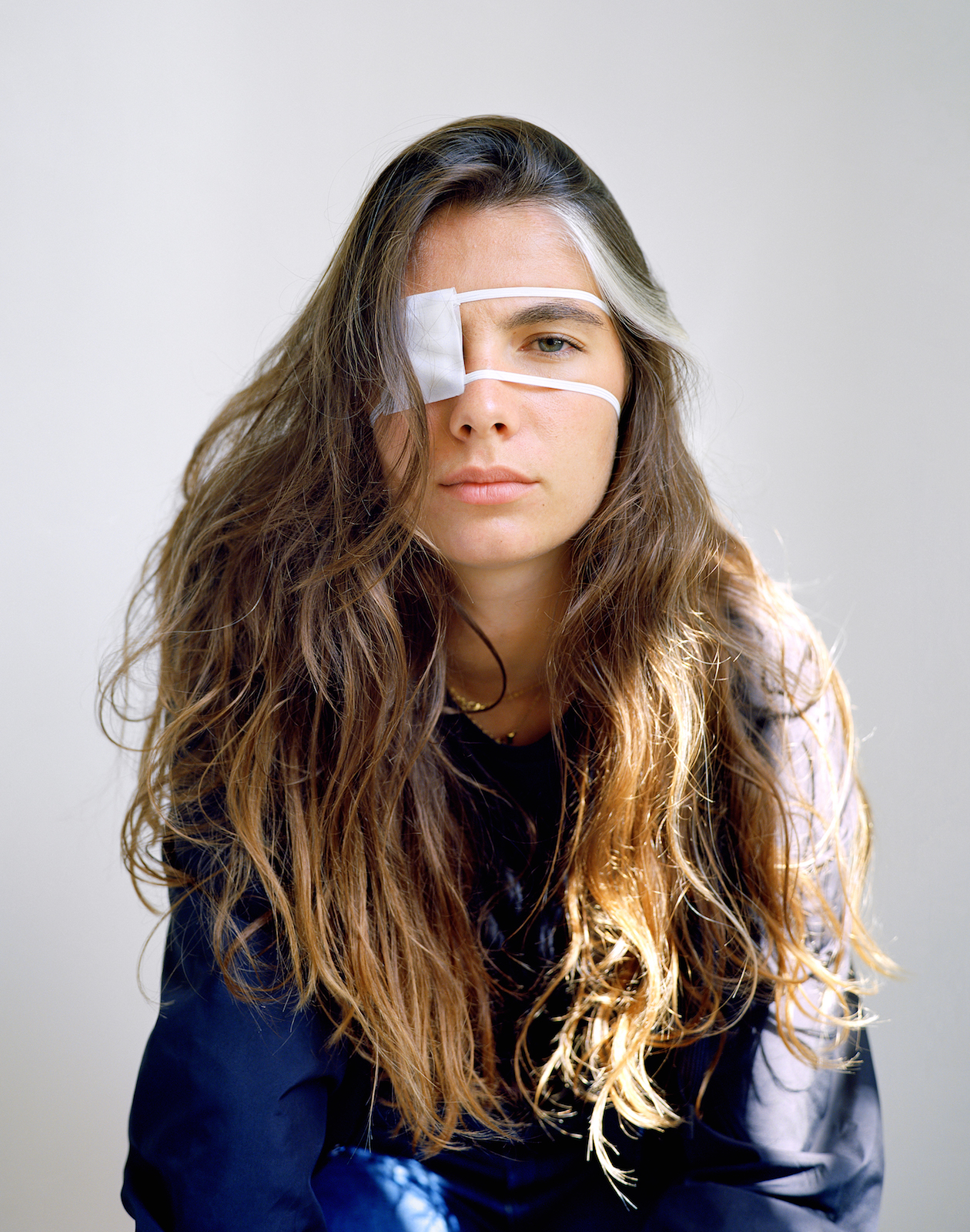
Color photograph
Image: 31,5 x 24, 8 inc
Frame: 32,8 x 26 inch
Human being perceives relief and locates himself in space thanks to the coordination of his two eyes. This simple assertion is at stake in the Télé-vision series, which is conceived as a representation of seeing in the form of a photographic portrait. In the manner of a stereoscopic vision, in which the combination of two images is essential to the apprehension of space and volume. Each photograph embodies the point of view of a single eye, both for the viewer and the model. The entire series thus proposes four similar but unique portraits, presented in pairs, in the image of the gaze that is cast upon them. By placing the viewer in front of the decomposition of the gaze, the series underlines the way in which the omnipresence of images modifies our relationship to the world. The transmission of sensitive experience through words is slowly replaced by a truncated two-dimensional world constructed by images.
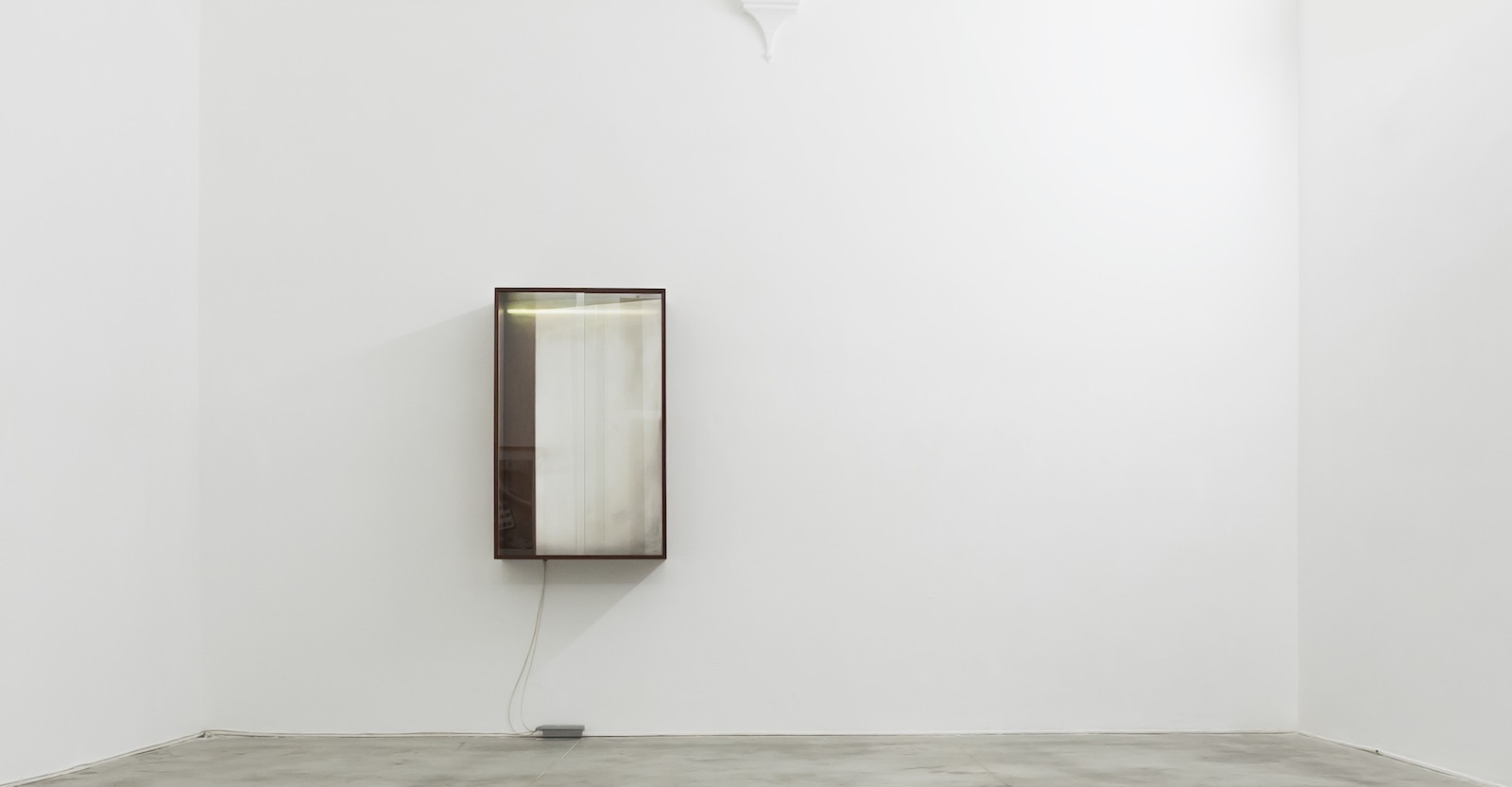
49 x 31,6 x 13,6 inches
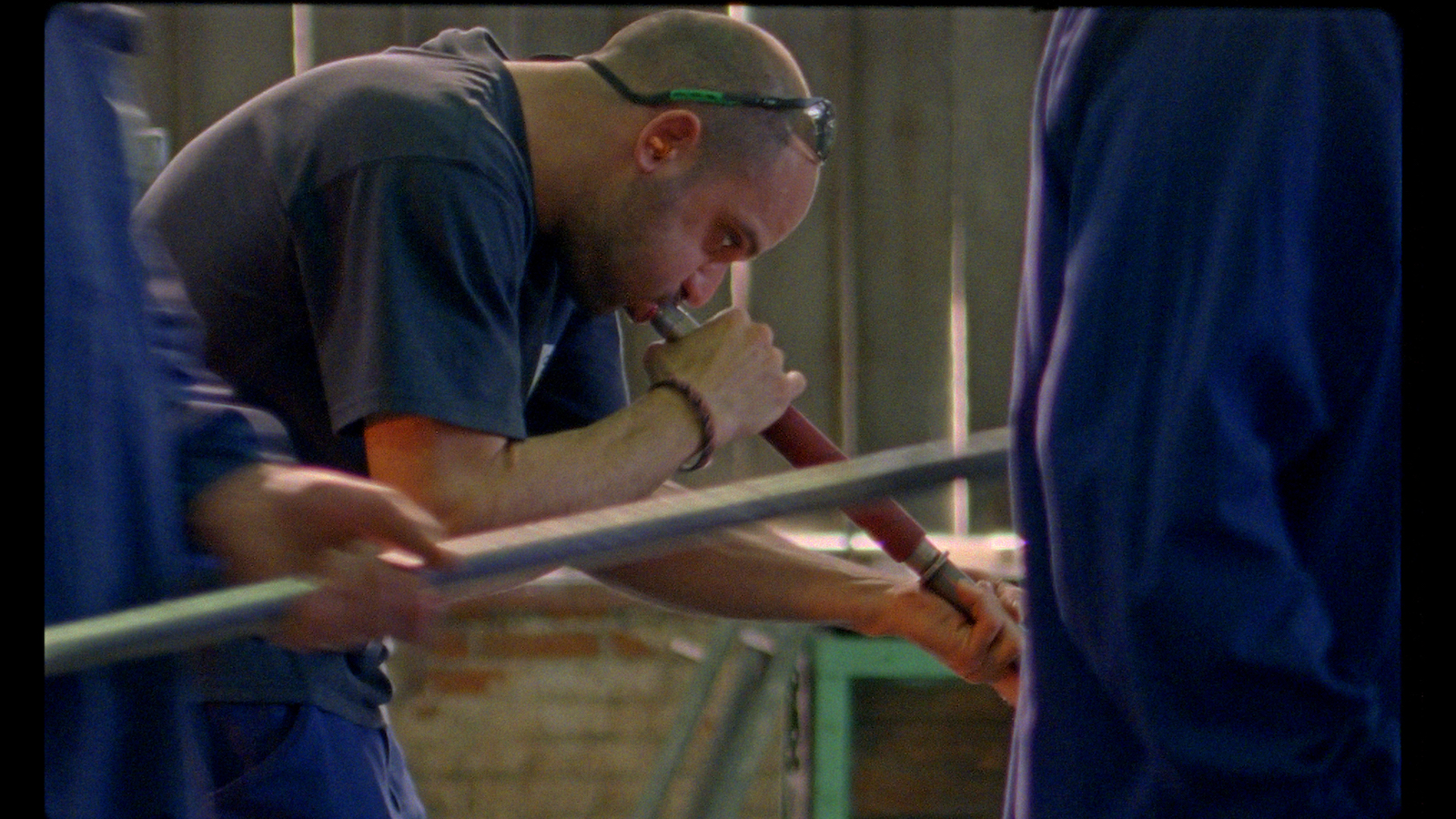
19'01''
Camera Assistant : Lucas Léglise
Script : Mana Kikuta
Perchman : Clémence Joly
Set up : Laurent Montaron
Music : Vincent Guédon, Laurent Montaron
Camera Aaton XTR Prod
Optiques : Angénieux
Film 16 mm Kodak Vision3 500 T 5219
Laboratory : Silverway, Paris
Telecinéma : Blackmagic Cintel Film Scanner
With the support of Verrerie Saint-Just, Saint-Gobain Glass France S.A. and CCA,Tel Aviv.
https://vimeo.com/275388259 (password : macluhan)
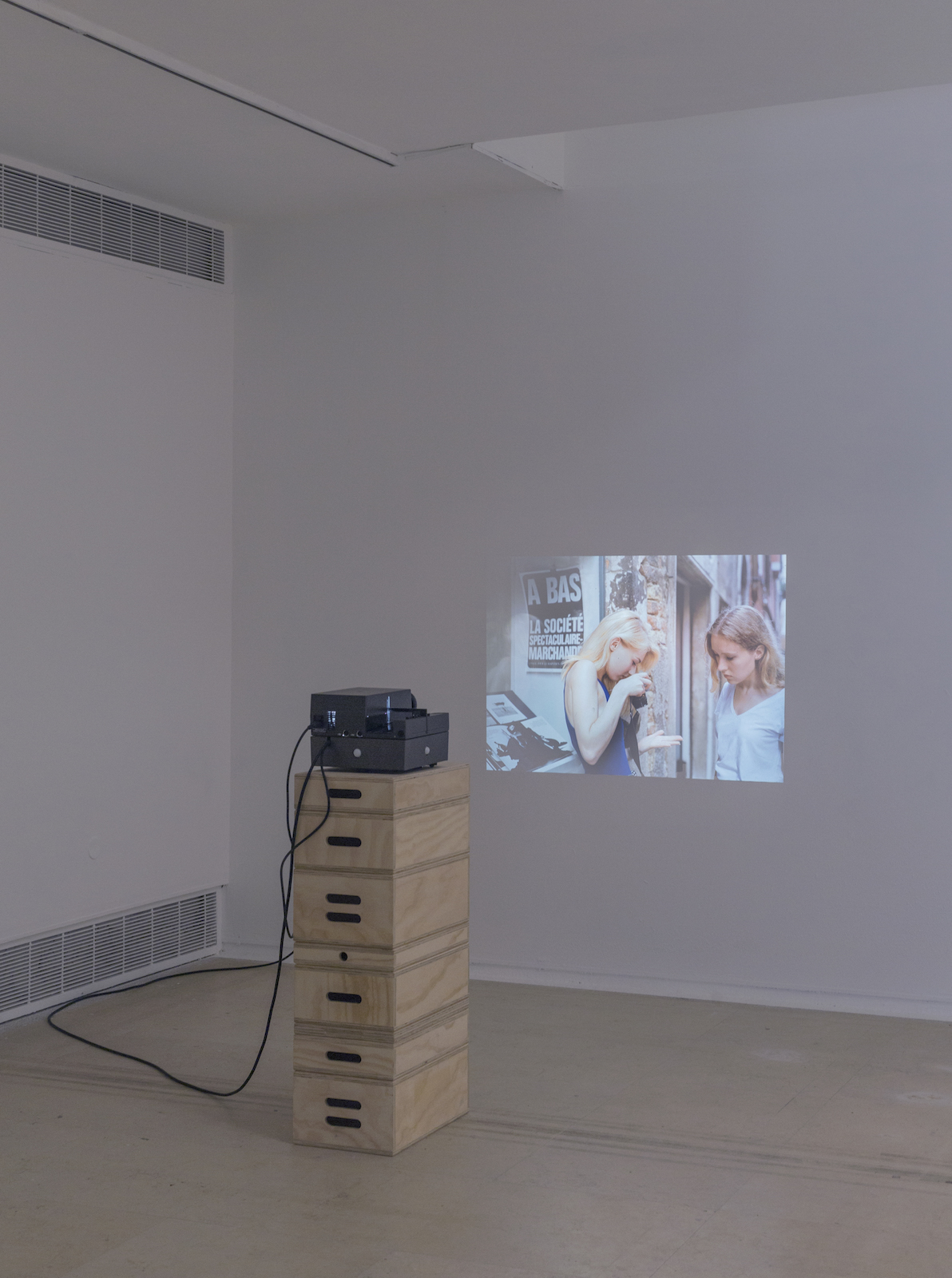
variable dimensions
Exhibitionview "REPLICA", CCA, Tel-Aviv, Israel, 2018
© Eyal Agivayev
Focus est la projection d'une unique image diapositive qui disparaît lorsque le spectateur entre dans l'espace où se trouve l'installation. L'oeuvre consiste en une expérience impossible, présente lorsque le spectateur est absent. Elle met paradoxalement en question notre rapport à l'image et sa persistance dans la mémoire. La disparition de l'image diapositive, en activant la persistance rétinienne, convoque chez le regardeur une image rémanente. L'image entreaperçue est celle de deux jeunes femmes dans une rue de Venise manipulant un appareil photographique. La présence dans la vitrine d'une affiche situationniste dénonçant la société marchande du spectacle se fait l'écho, en forme de commentaire, de la rémanence des images dans une ville par ailleurs sur-représentée.
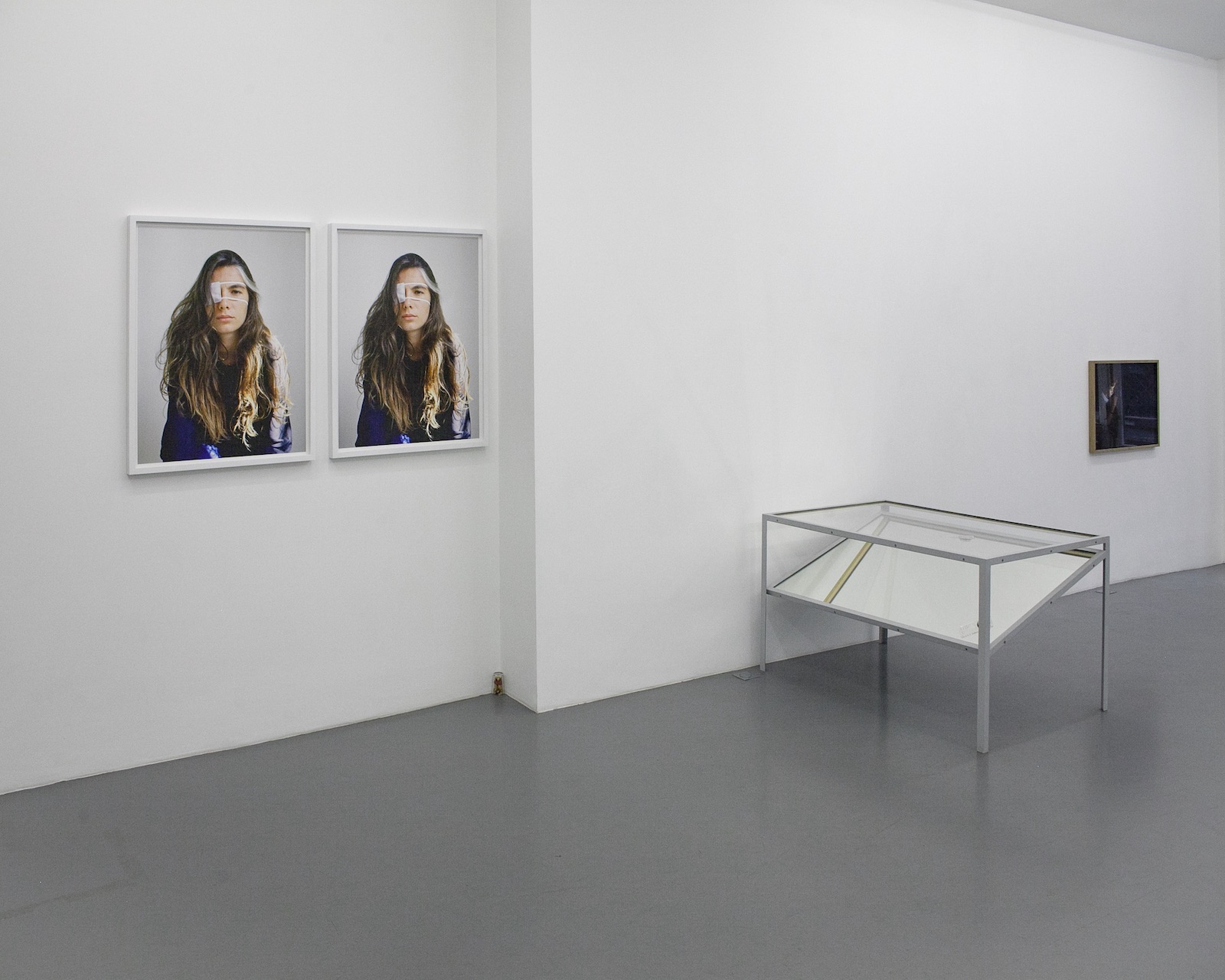
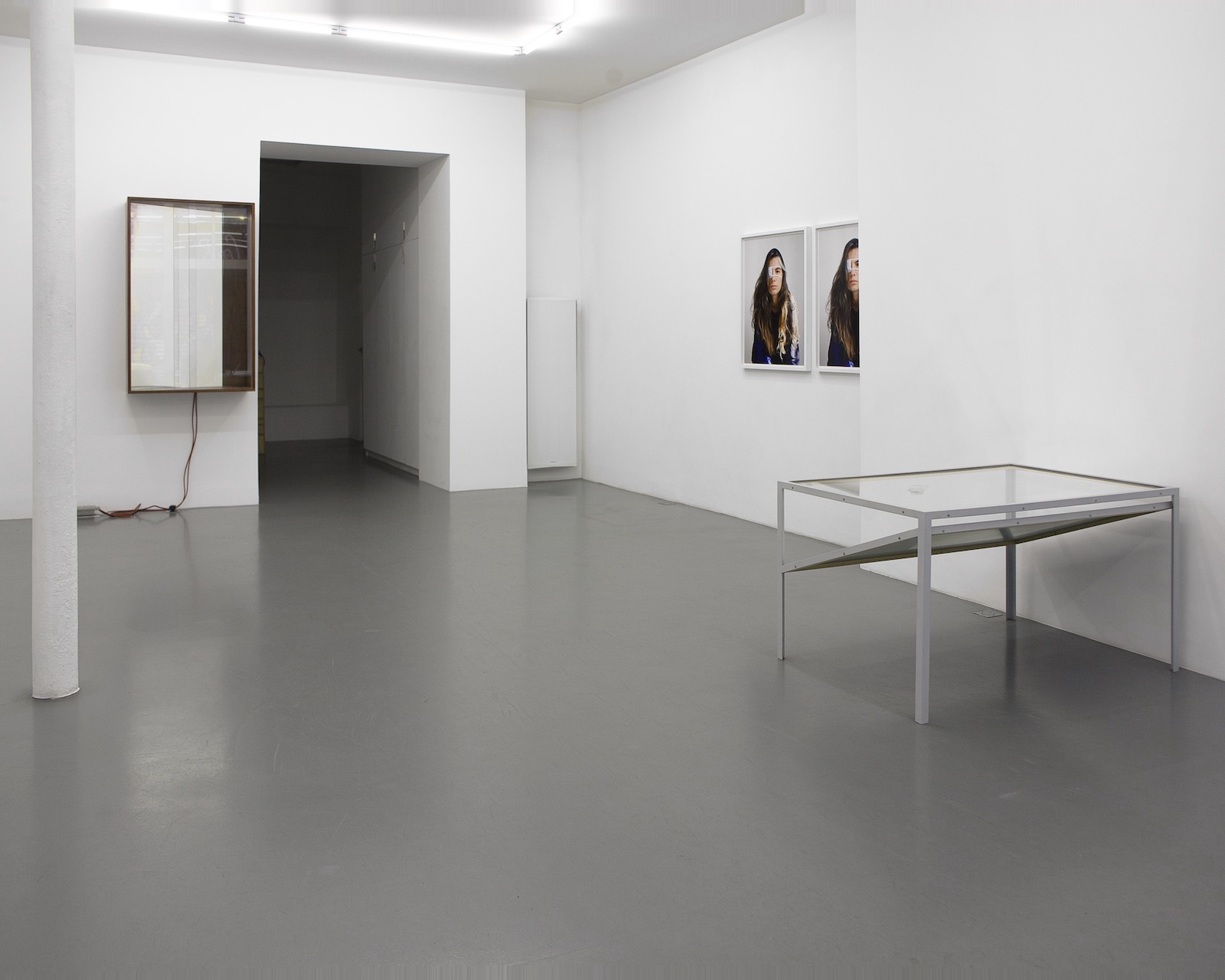

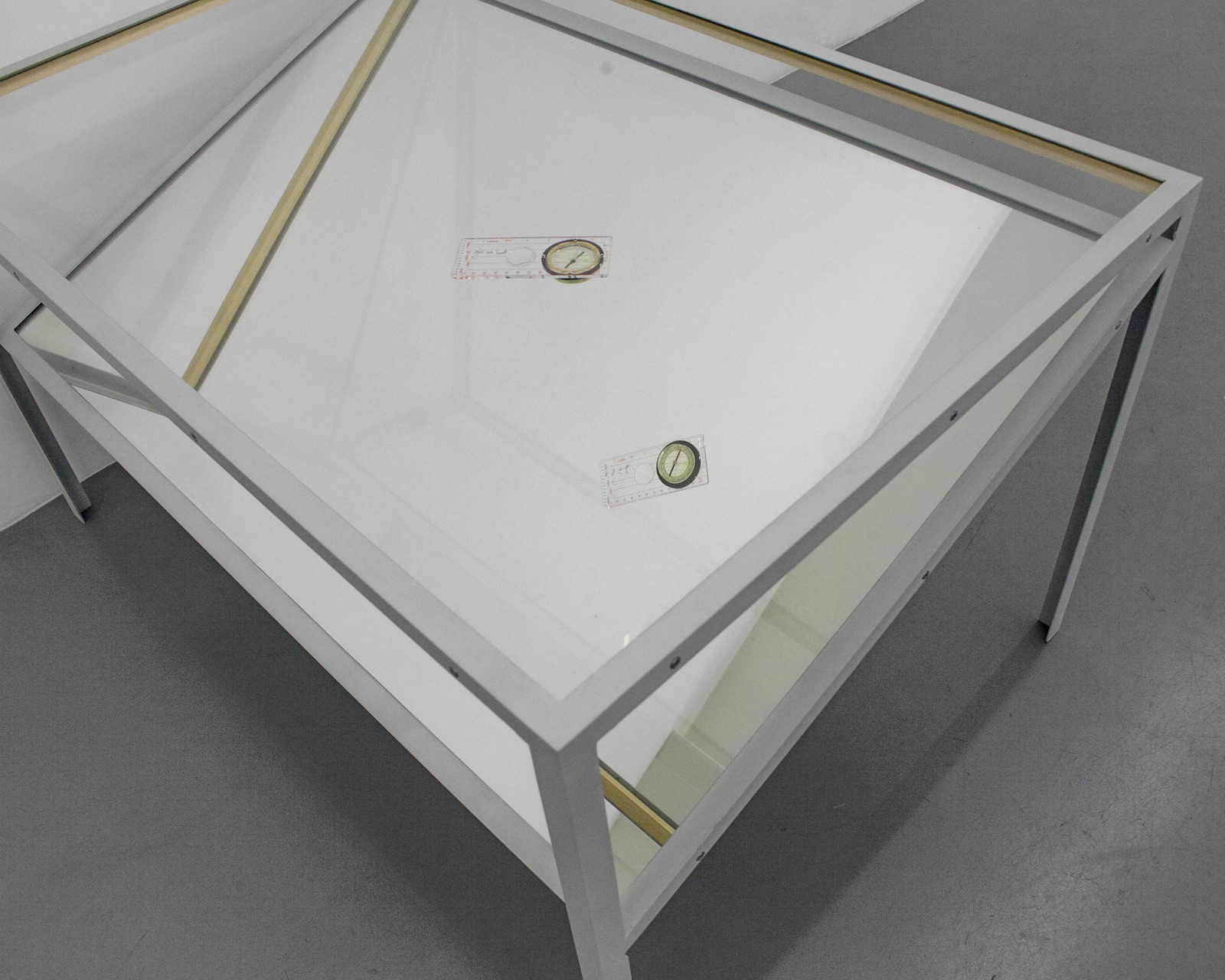
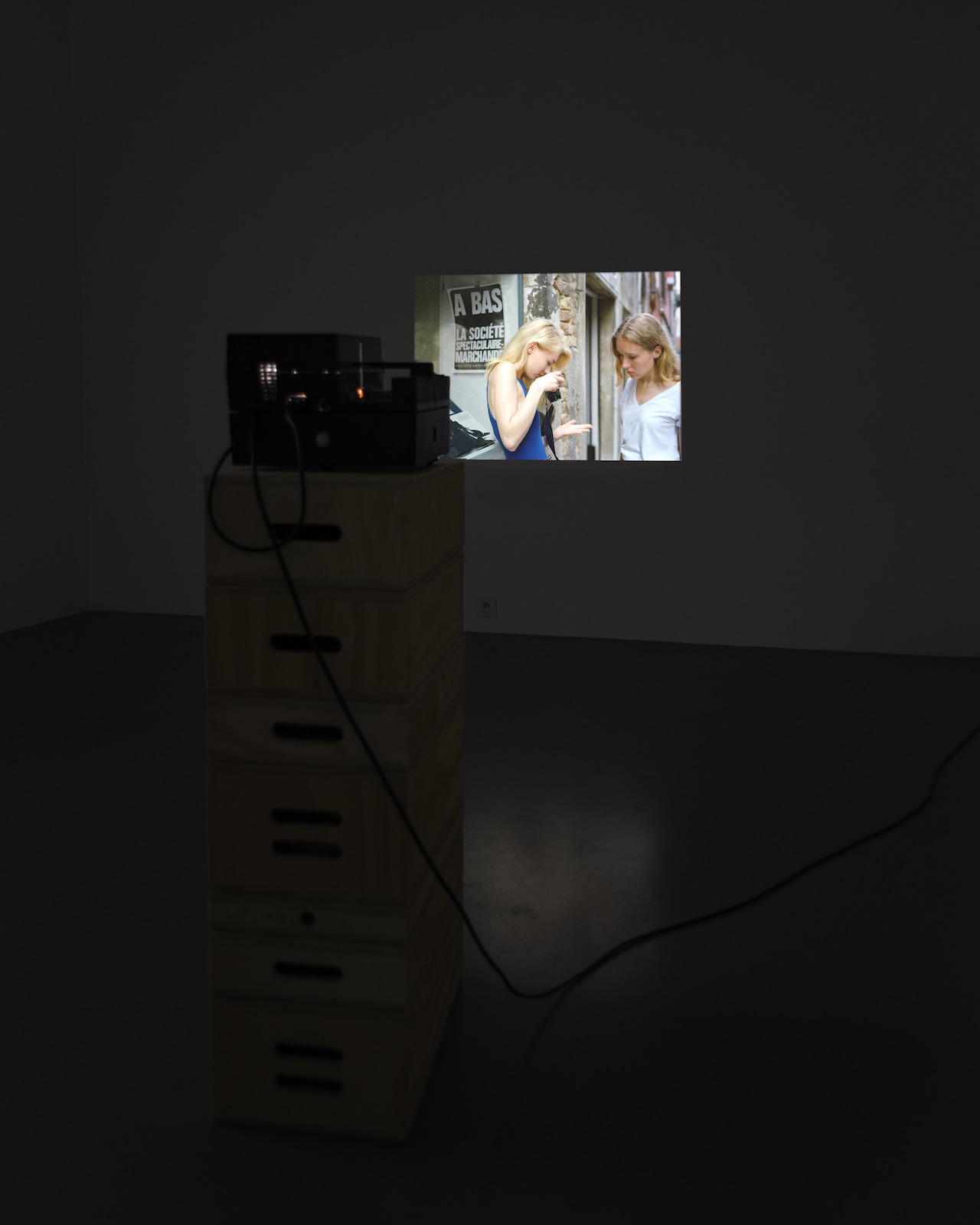
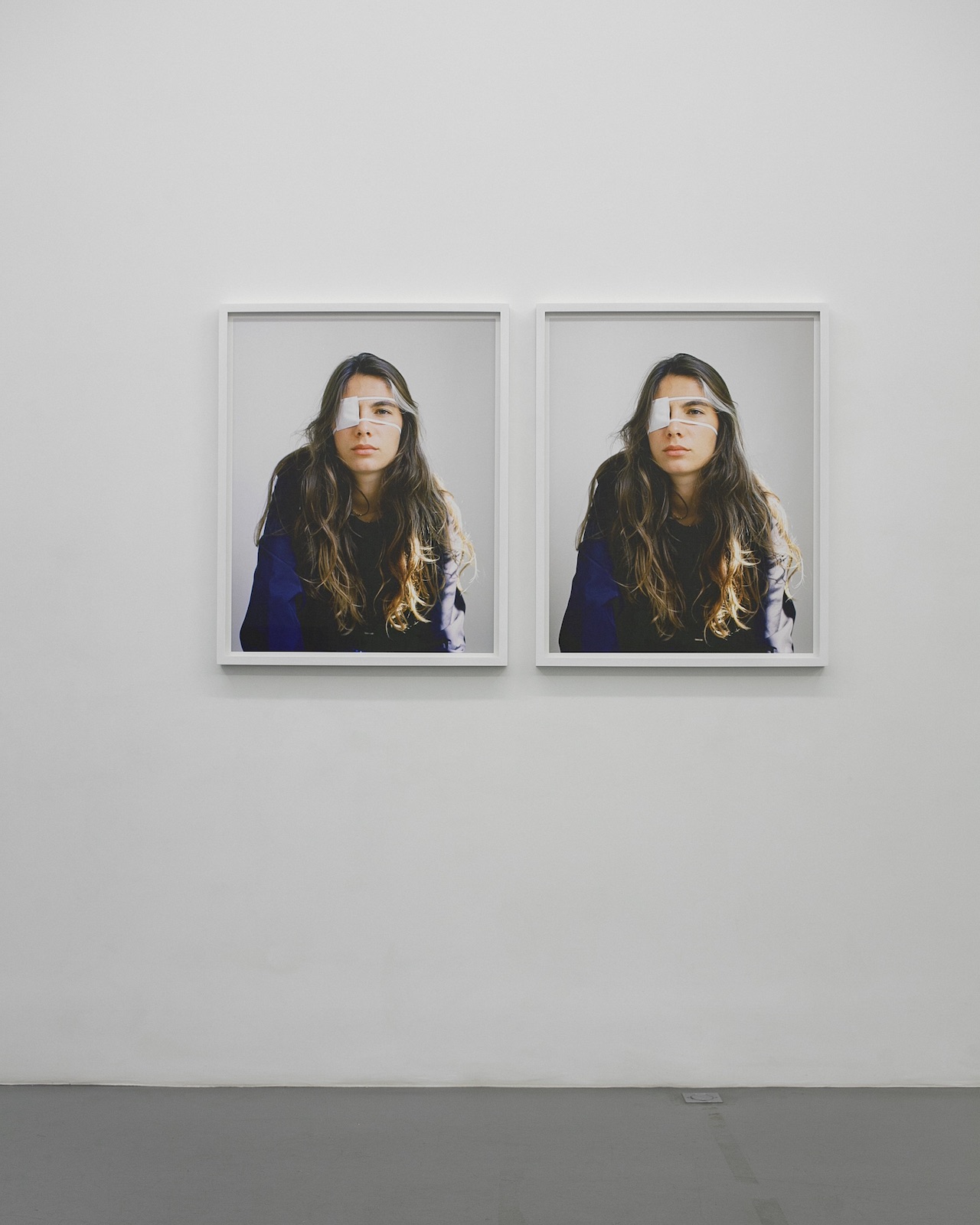

To consult the catalogue of the exhibition, please click here